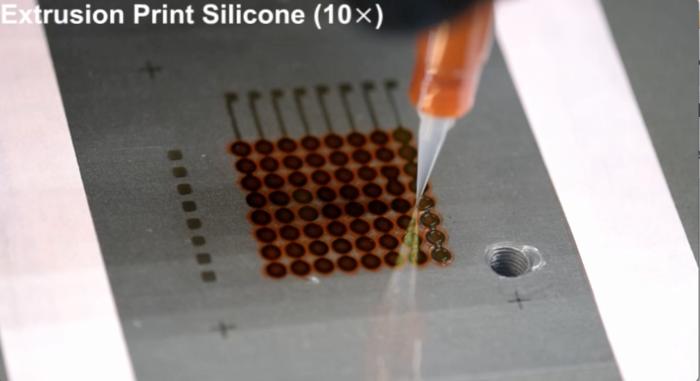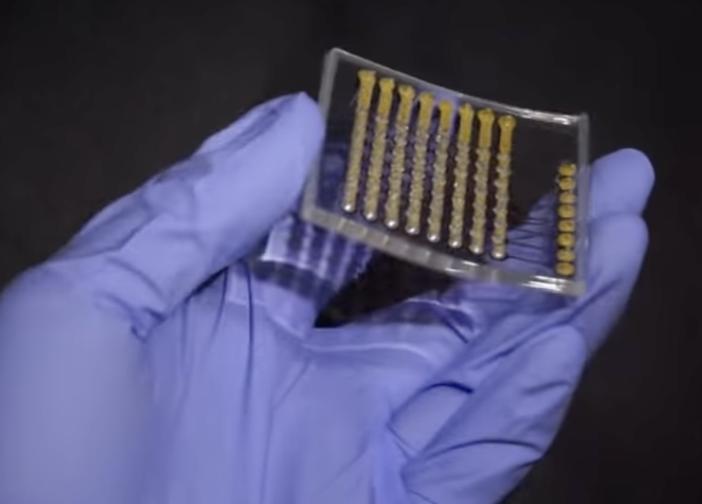
A team of researchers from the University of Minnesota, MIT, Korea Institute of Industrial Technology and Pusan National University has demonstrated a multimodal printing methodology that results in fully 3D-printed flexible organic light-emitting diode displays.
The fully 3D-printed flexible OLED display prototype is about 1.5 inches on each side and has 64 pixels. Image credit: McAlpine Group, University of Minnesota.
Organic light-emitting diode (OLED) displays are competitive alternatives to liquid crystal displays (LCDs) due to their characteristics of self-emission, high contrast ratio, full viewing angle, power efficiency, and mechanical flexibility.
Typically, in commercial OLED displays, the active layers (or emitting layers) are thermally evaporated to achieve high uniformity and resolution.
Printing methods are being actively investigated because of the potential for scaling up to large panel displays and reduction of material waste
“OLED displays are usually produced in big, expensive, ultra-clean fabrication facilities,” said senior author Professor Michael McAlpine, a researcher in the Department of Mechanical Engineering at the University of Minnesota.
“We wanted to see if we could basically condense all of that down and print an OLED display on our table-top 3D printer, which was custom built and costs about the same as a Tesla Model S.”
Professor McAlpine and colleagues had previously tried 3D printing OLED displays, but they struggled with the uniformity of the light-emitting layers.

Other groups partially printed displays but also relied on spin-coating or thermal evaporation to deposit certain components and create functional devices.
In the new research, the authors combined two different modes of printing to print the six device layers that resulted in a fully 3D-printed, flexible organic light-emitting diode display.
The electrodes, interconnects, insulation, and encapsulation were all extrusion printed, while the active layers were spray printed using the same 3D printer at room temperature.
The display prototype was about 1.5 inches (3.8 cm) on each side and had 64 pixels. Every pixel worked and displayed light.
“I thought I would get something, but maybe not a fully working display,” said first author Dr. Ruitao Su, a postdoctoral researcher at MIT.
“But then it turns out all the pixels were working, and I can display the text I designed. My first reaction was ‘It is real!’ I was not able to sleep, the whole night.”
“The 3D-printed display was also flexible and could be packaged in an encapsulating material, which could make it useful for a wide variety of applications.”
“The device exhibited a relatively stable emission over the 2,000 bending cycles, suggesting that fully 3D printed OLEDs can potentially be used for important applications in soft electronics and wearable devices.”
The work was published in the journal Science Advances.
_____
Ruitao Su et al. 2022. 3D-printed flexible organic light-emitting diode displays. Science Advances 8 (1); doi: 10.1126/sciadv.abl8798